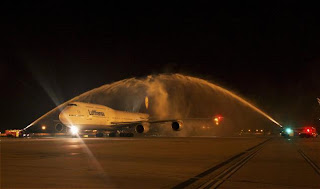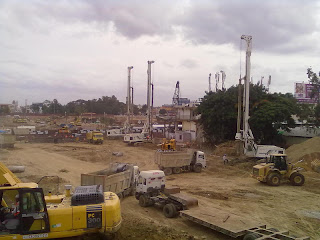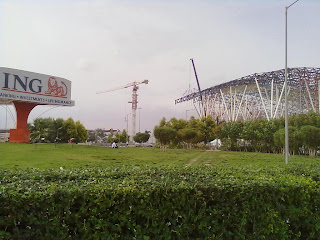Bangalore’s planners are looking at low-cost public transport to solve the city’s traffic problems
Despite being the first city outside New Delhi to launch a modern metro rail service in the country, Bangalore’s planners are increasingly looking at low-cost public transport to solve the city’s burgeoning traffic problems.
The state’s Urban Land Transport Authority (ULTA) has been busy the last one month finalizing two draft reports to help decongest the city. The first is a bus rapid transport (BRT) system along the city’s Outer Ring Road that links two of the city’s information technology (IT) corridors; the second is a commuter railway system that would link the city’s suburbs with neighbouring towns and cities.
These efforts highlight attempts to ease congestion in one of India’s fastest growing cities as the vehicular population grows at an unprecedented pace.
Data from the regional transport office in Bangalore show the vehicle population in Bangalore has increased from 2.6 million in 2006 to 3.8 million in 2011, an increase of 46% in five years. According to the city’s comprehensive traffic and transportation plan (CTTP), the average Bangalorean is spending 240 hours stuck in traffic every year.
The ULTA held a meeting in mid-July to discuss the draft report submitted by RITES for a suburban rail service. According to the report, reviewed by Mint, RITES has proposed setting up four routes totalling 161km connecting towns on the outskirts of Bangalore to the city. This could cut short commute time for people living along the routes by up to 90 minutes.
Sudhanshu Mani, divisional railway manager of South Western Railway’s Bangalore division, said at the meeting that operations can start within a year once the project gets final approval from the state government and the railways, The Hindu newspaper reported on 14 July.
“We have already written to the Union government before the railway budget this year to begin the services next year,” urban development minister S. Suresh Kumar said. “Bangalore is in dire need for such a rail service.”
The RITES report also proposes doubling and electrification of all lines in the second phase to boost capacity.
Planning experts have welcomed ULTA’s moves. India Urban Space Foundation chairperson and Janaagraha Centre for Citizenship and Democracy co-founder Swati Ramanathan said the commuter railway service is important as it connects satellite towns with the city centre. “The infrastructure is already there,” she said. “We have defunct stations and the tracks have mostly been laid that we can make use of.”
Despite being the first city outside New Delhi to launch a modern metro rail service in the country, Bangalore’s planners are increasingly looking at low-cost public transport to solve the city’s burgeoning traffic problems.
The state’s Urban Land Transport Authority (ULTA) has been busy the last one month finalizing two draft reports to help decongest the city. The first is a bus rapid transport (BRT) system along the city’s Outer Ring Road that links two of the city’s information technology (IT) corridors; the second is a commuter railway system that would link the city’s suburbs with neighbouring towns and cities.
These efforts highlight attempts to ease congestion in one of India’s fastest growing cities as the vehicular population grows at an unprecedented pace.
Data from the regional transport office in Bangalore show the vehicle population in Bangalore has increased from 2.6 million in 2006 to 3.8 million in 2011, an increase of 46% in five years. According to the city’s comprehensive traffic and transportation plan (CTTP), the average Bangalorean is spending 240 hours stuck in traffic every year.
The ULTA held a meeting in mid-July to discuss the draft report submitted by RITES for a suburban rail service. According to the report, reviewed by Mint, RITES has proposed setting up four routes totalling 161km connecting towns on the outskirts of Bangalore to the city. This could cut short commute time for people living along the routes by up to 90 minutes.
Sudhanshu Mani, divisional railway manager of South Western Railway’s Bangalore division, said at the meeting that operations can start within a year once the project gets final approval from the state government and the railways, The Hindu newspaper reported on 14 July.
“We have already written to the Union government before the railway budget this year to begin the services next year,” urban development minister S. Suresh Kumar said. “Bangalore is in dire need for such a rail service.”
The RITES report also proposes doubling and electrification of all lines in the second phase to boost capacity.
Planning experts have welcomed ULTA’s moves. India Urban Space Foundation chairperson and Janaagraha Centre for Citizenship and Democracy co-founder Swati Ramanathan said the commuter railway service is important as it connects satellite towns with the city centre. “The infrastructure is already there,” she said. “We have defunct stations and the tracks have mostly been laid that we can make use of.”





















































